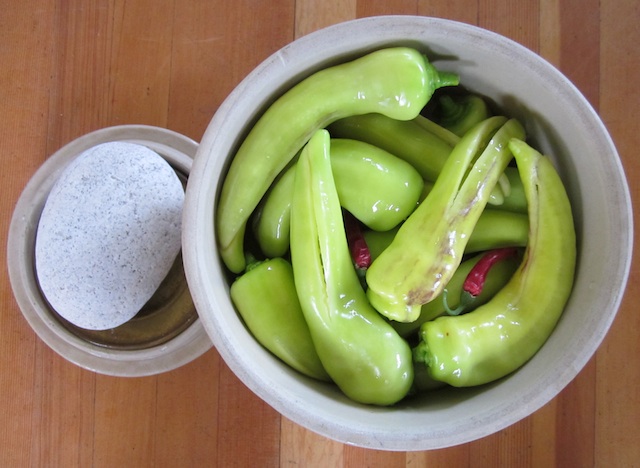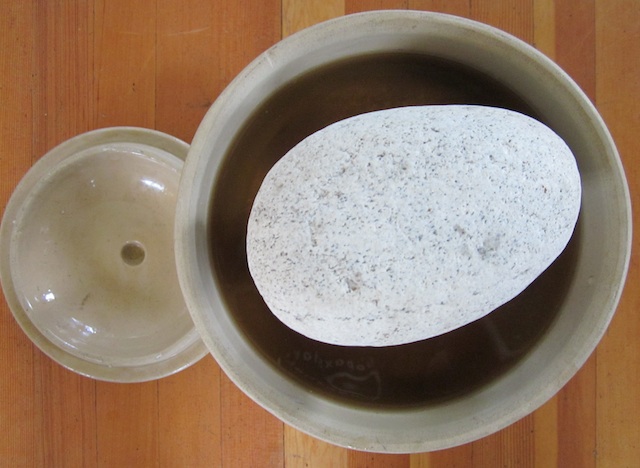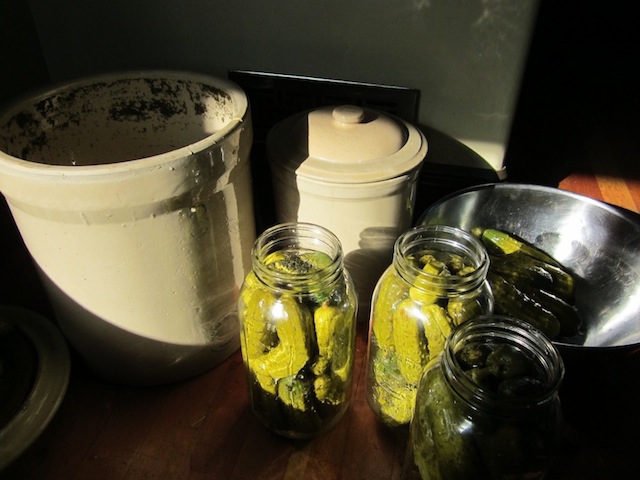
The large crock is where I pickle cucumbers. I remove the pickles from the crock and tightly pack into 2L jars.
The cucumber plants are at their peak production now. Up to this week, we have eaten all the crock pickles. Now, there are just too many pickles to eat. Here is my original recipe for Harvest Bounty and Pickling: Crock Pickles. If you are looking for an even easier recipe, try the recipe below.
After about a week in the pickling juice, I remove the pickles and repack them into 2L mason jars. I add a few grape, raspberry, current, gooseberry or horseradish leaves ? reported to keep pickles crunchy ? to the jars and pour the pickling juice over top of the pickles. I top with a plastic mason lid and move the jars to the root cellar or any cool place. If I don’t have any plastic mason lids I use plastic wrap and then canning jar lids.
Do remember these pickles are not canned and will not last as long as canned foods. Make sure the pickling juice is completely covering the pickles. Consume the pickles in 4-6 months and store in a very cool place.
If you are trying to save money, spend some time thinking about how many liters of pickles your family normally consumes over the winter. If you have no idea of your family’s normal consumption, just decide on having one liter of pickles per week. During the winter, consume the pickles until they are gone. You will have an idea of your family’s consumption by next season and can adjust your numbers. In this way, you will save money while feeding your family the best quality food. Don’t worry about running out. Running out adds to everyone’s enjoyment and anticipation of the first pickles of the year.
Do not discard the pickling juice. The pickling juice can be used for making salad dressing. The pickling juice also has salt and sweetener added so adjust your recipe with these additives in mind. This is my standard Whole Seed Mustard Dressing. By reusing this “waste product” you will save money and reduce your waste stream.
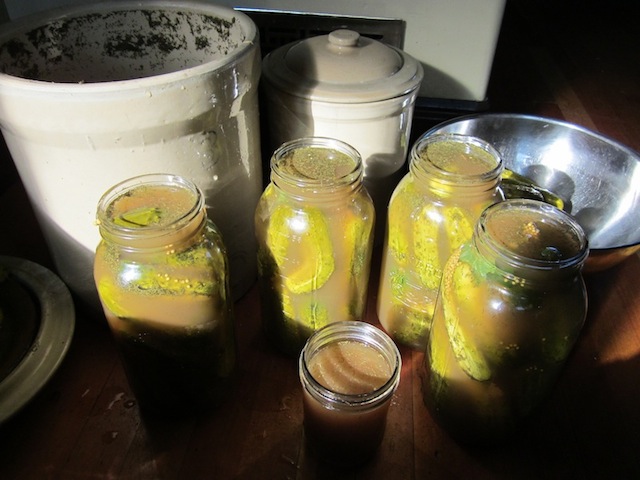
After tightly packing the jars, fill the jars with pickling juice and completely cover the pickles. Put the very large pickles aside for later use. Save any extra pickling juice and use for the salad dressing. Don’t waste anything!
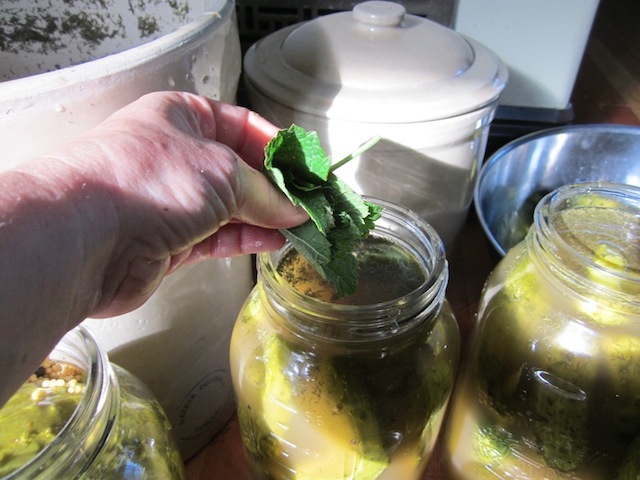
Add grape, raspberry, current, gooseberry, or horseradish leaves to the jar. These leaves are reported to help keep pickles crunchy. It’s easier to add the leaves to the bottom of the jar.
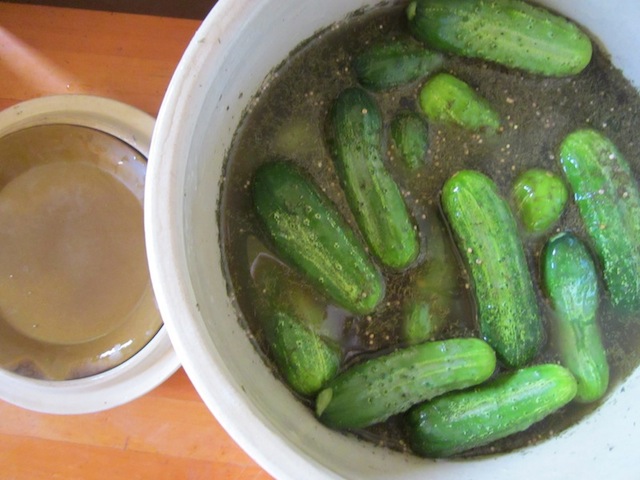
Make a new batch of pickling juice and add the new cucumbers to crock.
Simple Crock Pickles
1gal organic cider vinegar
1c course sea salt
1/2c-1c local honey
1c organic whole yellow mustard seeds
1/4c organic dried dill weed
lots of garden pickling cucumbers
Warm up about 1c of cider vinegar to dissolve the honey. Pour into the bottom of the crock and mix in the mustard seeds, dill weed and the remainder of the cider vinegar. Add the cucumbers and weigh down the cucumbers with a non-reactive plate and stone. The pickles are ready within a few days.
You can eat the pickles right out of the crock or pack the pickles into jars for storage. You can add more cucumbers to the pickling solution. You will know the solution is getting too diluted because the cucumbers will not taste “pickled”. At this point, make up another batch of pickling solution with the same ratio of vinegar, salt and honey as above.
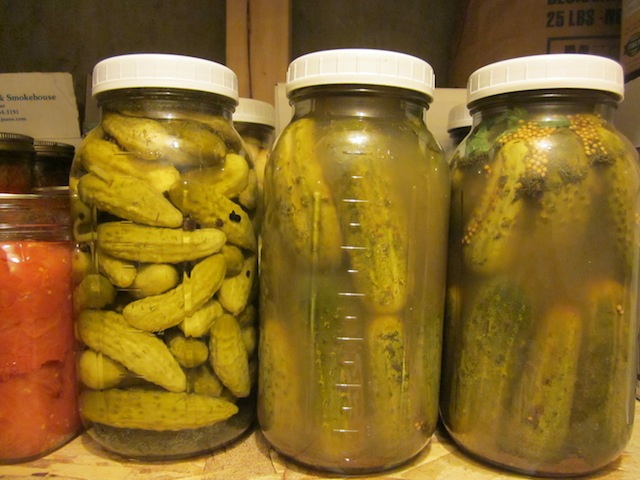
Top the mason jar with a plastic lid. Store in a cool, dark place.
Homemade Sweet Pickles
4-6 large pickles, sliced
1-2 sweet local onions, sliced into rings
1/4-1/2c local honey, adjust for taste
1/2tsp organic turmeric
pickling juice to cover
Warm up 1c of pickling juice to help dissolve the honey. Add the turmeric and pour into the 2L mason jar. Slice up the pickles and onions and pack tightly into the 2L mason jar. Add enough pickling juice to cover the pickles and carefully invert the mason jar a few times to mix the juice. Let the pickles sit overnight in the fridge. The pickles and onions will take on the yellow color of the turmeric.
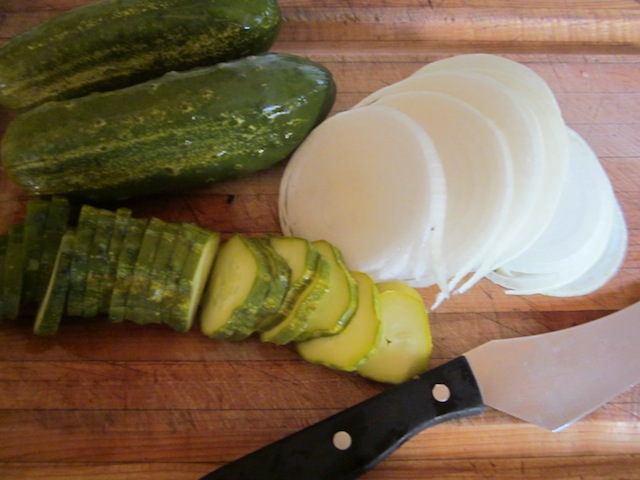
Take the very large pickles and slice evenly. Slice whole rounds of sweet onions and pack both tightly into a 2L mason jar.
I consider Homemade Sweet Pickles a seasonal food. They are best made with new sweet onions that are coming out of gardens at this time of year. Sweet pickles are so delicious that they don’t last very long. My family looks forward to late summer barbecues and sweet pickles. Again, save the pickle juice for making more sweet pickles or use as the vinegar part of a sweeter summer salad dressing.
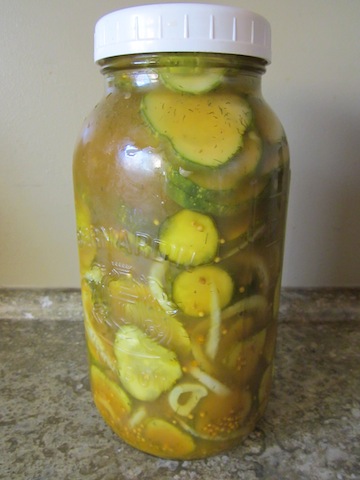
These sweet pickles are delicious as a snack or as a relish on paleo burgers.









